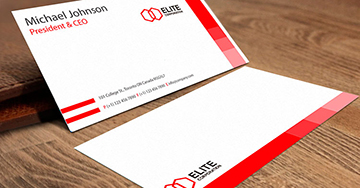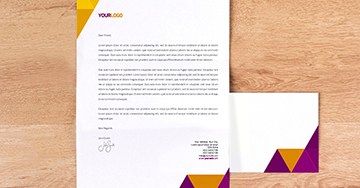Discover More
Dive into our blog where creativity meets knowledge. Discover the latest trends, insightful tips, and inspiring stories that amplify the impact of print on businesses. Stay informed, stay inspired.
Discover the ultimate guide on Financial Business Cards for Financial Services, a valuable resource to elevate your marketing strategy and boost your professional image.
Discover our guide on crafting impactful Financial Postcards, a must-read for Financial Services looking to enhance customer engagement effectively.
Enhance your marketing with our guide on Financial Flyers, essential for boosting Financial Services branding and understanding vital printing techniques.
Discover how to create compelling Financial Brochures in our guide tailored for Financial Services, a valuable resource for your marketing material needs.
Enhance your knowledge with our guide on printing Financial Calendars for Financial Services, providing valuable insights to elevate your printing projects.
Discover how Financial Stickers can elevate marketing strategies in Financial Services with our informative guide on creating effective, customized print solutions.
Discover our guide on printing for Financial Magnets and Financial Services; a go-to resource for leveraging high-impact materials in your sector now.
Discover our guide on printing Financial Labels for Financial Services, offering invaluable insights to enhance your business's labeling strategy effectively.
Discover our guide on printing Financial Bookmarks for Financial Services, packed with insights to enhance your knowledge and streamline your projects!
Discover the ultimate guide on designing Financial Door Hangers for Financial Services, to enhance your marketing with expert tips and creative insights.
Discover our guide on Financial Catalogs to enhance Financial Services communication, offering detailed insights to elevate your printing quality and effectiveness.
Explore this detailed guide on Financial Notepads for Financial Services, offering insights and tips to enhance your financial strategies with effective note-taking.
Discover our guide on utilizing Financial Envelopes for Financial Services that offers valuable insights to enhance your financial communications effectively.
Discover this insightful guide on Financial Greeting Cards and learn how to enhance your Financial Services marketing strategy effectively and creatively.
Learn how to effectively design Financial Banners with our guide tailored for Financial Services; unlock impactful strategies to boost your financial campaigns.
Learn how Financial Posters can enhance Financial Services marketing with our insightful guide, perfect for elevating your business communication strategy.
Discover the essential guide on crafting Financial Table Tents for Financial Services, providing insightful tips to elevate your promotional efforts today!
Discover the ultimate guide on crafting compelling Financial Invitations for Financial Services, unlocking insights to enhance your print projects and connect effectively.
Dive into our guide on creating engaging Financial Trading Cards for Financial Services and discover valuable insights to boost your brand's informational outreach.
Discover this insightful guide on Financial Gift Certificates for Financial Services, learn how to effectively use them to enhance your business, and delight clients.
Discover how Financial Wall Graphics can enhance your Financial Services office with this informative guide, perfect for elevating your space.
Discover the ultimate guide on creating Financial Letterheads for Financial Services, filled with valuable insights to enhance your business communication today!
Discover our Startup Catalogs guide for Startups Smbs, offering essential insights to boost your knowledge in printing and elevate your new business.
TABLE OF CONTENTS
Why some financial marketing campaigns succeed while others fail? Financial marketing is a game-changer, transforming how businesses attract and retain clients. It's not just about numbers; it's about creating trust and delivering value. Effective financial marketing strategies can set you apart from the competition, making your brand memorable.
At 4OVER4.COM, we understand the nuances of financial marketing. We know that a well-crafted message in a print blog can make all the difference. Whether you're aiming to boost client engagement or enhance brand loyalty, mastering financial marketing is key. Dive into our guide to discover practical tips and proven techniques that will elevate your campaigns and drive success.
Key Takeaways
Key Point | Summary |
|---|---|
Understanding Financial Marketing | Financial marketing involves strategies tailored to promote financial services and products, emphasizing trust and credibility. |
Key Financial Services for Businesses | Essential financial services include investment management, insurance, and banking, all of which require effective marketing to attract clients. |
Benefits of Printed Materials in Finance | Printed materials like brochures and reports enhance credibility and provide tangible information to clients, crucial in the financial sector. |
Custom Solutions for Financial Services | Tailored printing solutions from 4OVER4.COM can help financial businesses stand out and meet specific regulatory requirements. |
Enhancing Client Communication with Print | High-quality printed materials improve client communication by providing clear, professional, and reliable information. |
Navigating Regulatory Environments | Understanding and complying with financial regulations in printed materials is essential to avoid legal issues and maintain client trust. |
Understanding Financial Marketing
What is financial marketing and why is it important?
Financial marketing refers to the strategies used by financial institutions to promote their products and services. It includes advertising, public relations, and digital marketing. Effective financial marketing helps banks, insurance companies, and investment firms reach potential customers.
Marketing in finance is crucial. It builds brand awareness and attracts new clients. Proper marketing also educates consumers about different financial products. This helps them make informed decisions.
How has financial marketing evolved with digital advancements?
Digital advancements have transformed financial marketing. In the past, banks relied on TV ads and billboards. Now, they use social media, email campaigns, and search engine optimization (SEO). These tools allow more targeted messaging.
Online platforms provide real-time feedback. Companies can quickly see what works and what doesn't. This data-driven approach improves efficiency. Financial institutions can track customer behavior and preferences.
Why is customer trust vital in financial marketing strategies?
Customer trust is essential in financial marketing. People need to feel secure when dealing with money matters. Trustworthy brands attract loyal customers who are likely to recommend them to others through their Loyalty Program.
Building relationships takes time but pays off in the long run. Financial marketers should focus on transparency and honesty. Clear communication about fees and risks fosters trust.
Key Financial Services for Businesses
What are the essential financial services?
Businesses need several key financial services to thrive. Loans provide necessary capital for expansion and operations. Asset management helps businesses optimize their investments and resources. Insurance protects against unexpected losses and liabilities.
How can financial advising benefit businesses?
Financial advising offers expert guidance on managing finances. Advisors help businesses make informed decisions by analyzing market trends and financial data. This support ensures that companies can plan strategically, utilize business resources, and avoid costly mistakes.
Why is a diversified portfolio important?
A diversified portfolio of financial services reduces risk. By spreading investments across various assets, businesses protect themselves from market volatility. Diversification also allows companies to capitalize on different opportunities, enhancing growth potential.
What role do loans play in business growth?
Loans are crucial for funding major projects. They enable businesses to purchase equipment, hire staff, or expand facilities. Access to capital through loans supports long-term growth and operational stability.
How does asset management optimize resources?
Asset management involves monitoring and maximizing the value of a company's assets. This service includes investment strategies, liquidity management, and risk assessment. Effective asset management of business resources leads to better financial health and increased profitability.
Why is insurance vital for businesses?
Insurance safeguards businesses from unforeseen events. It covers losses due to accidents, natural disasters, or legal issues. Having comprehensive insurance policies ensures that a company can recover quickly from setbacks.
Benefits of Printed Materials in Finance
Why do printed materials enhance credibility?
Printed materials establish trust. In finance, credibility is crucial. Clients trust documents they can hold and read. Brochures and reports from 4OVER4.COM show professionalism. They convey that a firm takes its communication seriously.
Printed materials also provide a sense of permanence. Digital content can be altered or deleted. Printed documents, however, remain consistent over time. This consistency builds confidence in the information provided.
How do brochures facilitate understanding?
Brochures break down complex financial terms. Financial concepts often confuse clients. Well-designed brochures and print guides simplify these terms with visuals and clear text.
For example, a brochure on investment options can use charts to illustrate potential returns. This visual aid helps clients grasp complicated ideas quickly.
Reports are another tool for clarity. Detailed reports present data in an organized manner. Clients can review these at their own pace, leading to better comprehension.
What lasting impact do tangible materials have?
Tangible materials leave a lasting impression. In today's digital age, physical items stand out more than ever. A well-crafted brochure or report from 4OVER4.COM will stay on a client's desk longer than an email stays in their inbox.
Printed materials also encourage engagement. Clients are more likely to revisit a physical document multiple times. This repeated interaction reinforces the key messages and information contained within.
Custom Solutions for Financial Services
Why Are Personalized Financial Plans Important?
Personalized financial plans cater to individual client needs. Each client has unique financial goals and circumstances. A one-size-fits-all approach does not work.
Creating custom plans helps in addressing specific financial situations. It considers income, expenses, debts, and future goals. This leads to better financial outcomes for clients.
What Custom Financial Tools Enhance Service Delivery?
Custom financial tools and software streamline service delivery. These tools help in managing client portfolios efficiently.
Financial advisors use software for tracking investments. They can provide real-time updates on portfolio performance. This keeps clients informed about their investments.
e tools offer personalized investment recommendations. They analyze market trends and client data. This helps in making informed investment decisions.
How Do Tailored Communication Strategies Improve Client Satisfaction?
Tailored communication strategies enhance client satisfaction and retention. Clients appreciate when advisors understand their preferences.
Using personalized emails and messages builds stronger relationships. Clients feel valued and understood.
Regular updates on financial matters keep clients engaged. Sending newsletters with relevant information is effective. It shows that the advisor is proactive and knowledgeable.
Enhancing Client Communication with Print
How Do Printed Newsletters Inform Clients?
Printed newsletters keep clients updated on financial trends. They provide detailed market analysis and investment tips. Clients appreciate receiving tangible updates.
These newsletters can include personalized sections. For example, a section tailored to a client’s specific investments. This makes the information relevant and engaging.
Why Are Personalized Print Materials Effective?
Personalized print materials build stronger client relationships. They show that you care about individual needs. For instance, sending birthday cards or custom reports.
This personal touch fosters trust and loyalty. Clients feel valued when they receive something created just for them.
How Does Print Complement Digital Strategies?
Print complements digital communication strategies well. It offers a break from constant digital noise. Combining print and digital methods ensures comprehensive coverage.
For example:
Email updates paired with printed reports.
Social media posts supported by physical brochures.
Online webinars followed by mailed summaries.
This multi-channel approach, including a Loyalty Program, reaches clients in various ways, enhancing engagement and retention.
Navigating Regulatory Environments
What are the key financial regulations?
Financial marketing is heavily regulated. Key regulations include the Securities Act of 1933, which requires transparency in financial statements. The Securities Exchange Act of 1934 mandates ongoing disclosures by publicly traded companies. The Investment Advisers Act of 1940 governs investment advisors, ensuring they act in clients' best interests.
These laws aim to protect investors from fraud and ensure accurate information dissemination. Violating these regulations can result in severe penalties.
How can you stay compliant while marketing?
Staying compliant involves several strategies. First, always provide clear and accurate information. Misleading claims can lead to legal issues. Second, maintain thorough documentation of all marketing materials. This helps prove compliance if questioned.
Third, regularly train your marketing team on current regulations. This ensures everyone understands their responsibilities. Fourth, consider hiring a compliance officer or consultant to review your materials.
Why is transparency important?
Transparency builds trust with clients. Accurate and honest information helps clients make informed decisions. It also reduces the risk of regulatory penalties.
For example, a financial advisor should clearly explain fees and potential risks associated with investments. Misleading information can damage reputation and lead to legal consequences.
What role does accuracy play in financial marketing?
Accuracy is crucial in financial marketing materials. Inaccurate data can mislead clients and result in poor investment decisions. Always verify facts before publishing any content.
Double-check all figures, statistics, and claims for correctness. If unsure about any detail, consult reliable sources or experts before including it in your materials.
How does one ensure consistent compliance?
Consistency in compliance requires regular audits of marketing practices. Establish a routine for reviewing all promotional content against current regulations.
Use checklists to ensure every piece meets legal standards before release:
Verify factual accuracy
Ensure no misleading claims
Confirm clarity and transparency
Regular updates to training programs keep staff informed about changes in regulations.
Can technology aid compliance efforts?
Technology can significantly aid compliance efforts by automating many processes:
Compliance management software tracks regulatory changes.
Automated systems flag non-compliant content.
Digital archives store past marketing materials for reference during audits.
Maximizing Value with 4OVER4 Printing
How does 4OVER4 cater to the financial sector?
4OVER4’s printing solutions are tailored for the financial sector’s specific needs. They understand the importance of compliance and confidentiality. Their secure printing processes ensure that sensitive information remains protected. Financial institutions can rely on them for accurate and timely delivery.
What cost-effective options are available?
4OVER4 offers several cost-effective printing options for financial marketing materials, including free business cards. Bulk printing discounts help reduce costs without sacrificing quality. Digital printing allows smaller print runs at lower prices, perfect for targeted campaigns.
Flyers
Brochures
Business cards
These materials can be produced affordably with industry print solutions while maintaining a professional appearance.
Why use high-quality print materials?
High-quality print materials enhance brand image and build client trust. Clients perceive well-designed and printed documents as more credible. This perception is crucial in the financial industry where trust is paramount.
Practical Tips for Financial Printing Needs
What Paper and Finishes Should You Choose?
Choosing the right paper and finishes is crucial. For financial reports, use high-quality, thick paper. This ensures durability and a professional look. Glossy finishes work well for brochures. They make colors pop and attract attention.
For business cards, consider matte finishes. They offer a sophisticated feel. Textured paper can add a unique touch to invitations or special announcements. Always match the paper type with the purpose of your document.
How Can You Streamline the Printing Process?
Streamlining the printing process saves time and money. Start by planning ahead. Know your deadlines and quantities in advance. Use templates provided by 4OVER4.COM and the online designer to avoid design errors and get free samples.
Batch printing jobs when possible reduces costs. Ordering all materials at once often leads to discounts. Digital proofs help catch mistakes before printing large quantities.
How to Integrate Digital and Print Marketing?
Integrating digital and print marketing can boost effectiveness. Use QR codes on printed materials to link to online content. This bridges the gap between offline and online marketing efforts.
Email newsletters can complement printed brochures or flyers. Share similar messages across both platforms for consistency. Social media posts can highlight new print campaigns, driving more engagement.
FAQs on Financial Marketing Materials
Is Print or Digital Marketing More Effective in Finance?
Print marketing still holds value. It provides a tangible connection with clients. Digital marketing, however, reaches a broader audience quickly and cost-effectively. Both methods are effective but serve different purposes.
Print materials like brochures and flyers offer a personal touch with custom printing and design templates. They are ideal for local events and face-to-face meetings. Digital campaigns, such as emails and social media ads, can target specific demographics. Combining both can maximize reach and impact.
How Should One Budget for Financial Marketing Campaigns?
Start by defining your goals. Knowing what you want to achieve helps allocate funds wisely. A good rule of thumb is to spend 5-10% of your revenue on marketing efforts.
Break down the budget into categories:
Content creation
Distribution channels
Analytics tools
Content creation includes designing brochures, writing print blog articles, and producing videos. Distribution channels cover print costs at 4OVER4.COM or digital ad expenses. Analytics tools help track performance, ensuring money is well spent.
What Are the Steps to Measure ROI of Financial Marketing Materials?
Measuring ROI involves several steps:
Set clear objectives.
Track all expenses.
Monitor key performance indicators (KPIs).
First, define what success looks like for your campaign. This could be increased sales or more newsletter sign-ups.
Next, keep detailed records of all costs involved in the campaign. This includes printing fees from 4OVER4.COM or digital ad spends.
Finally, use KPIs to measure effectiveness:
Conversion rates
Customer engagement
Sales growth
Tools like Google Analytics can help track these metrics for digital campaigns. For print materials, customer surveys can provide feedback on their impact.
Closing Thoughts
You've learned the ins and outs of financial marketing and the unique benefits of printed materials. We've explored custom solutions, client communication, and navigating regulations. Now, it's time to put this knowledge to use.
Maximize your financial marketing efforts with 4OVER4.COM's expert printing services. Enhance client trust and communication with high-quality, compliant materials. Ready to elevate your financial services? Contact us today and make your print needs a reality.
Frequently Asked Questions
What is financial marketing?
Financial marketing involves promoting financial services and products to businesses and individuals. It focuses on building trust, providing valuable information, and meeting regulatory requirements.
Why are printed materials important in finance?
Printed materials enhance credibility and professionalism in finance. They offer tangible communication tools that can effectively convey complex financial information to clients.
How can custom solutions benefit financial services?
Custom solutions in financial printing cater to specific needs, ensuring personalized and effective communication. This can lead to better client relationships and higher satisfaction.
What are practical tips for financial printing needs?
Ensure clarity, compliance with regulations, and high-quality print materials. Use professional design services like 4OVER4.COM for reliable results with an online designer, shop by finish, and industry print solutions.
How does 4OVER4.COM maximize value in financial printing?
4OVER4.COM offers high-quality printing services tailored to the unique needs of the financial industry. Their expertise ensures cost-effective solutions that meet regulatory standards.
How can printed materials enhance client communication?
Printed materials provide a personal touch, making complex information easier to understand. They help build trust and reinforce key messages effectively.
What should I consider when navigating regulatory environments in finance?
Stay updated with current regulations, ensure all printed materials comply with legal requirements, and choose a trusted online printing company like 4OVER4.COM for guidance.




















